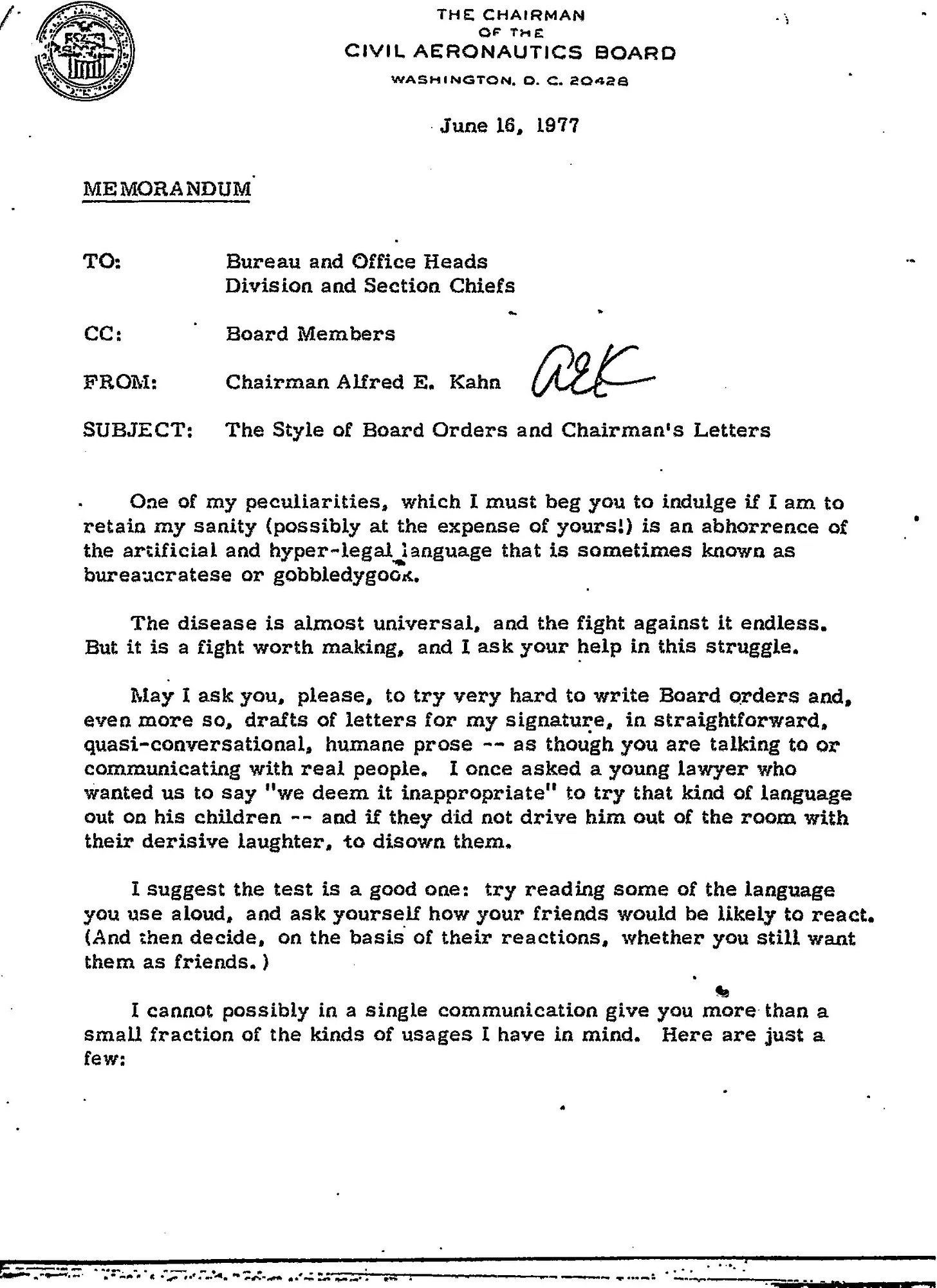Interesting
- The Kobo store is in a dismal state, and/or, the publishing world is in a dismal state
- The eBook publishing world is run by terrible humans who sometimes charge more for an eBook than a printed book, often release the print book weeks or months before an ebook, and just generally don’t know how to sell a book to people.
- There isn’t a competing ebook marketplace outside of Amazon and Kobo.
- And there’s a chance that the other great feature of Kobo eReaders is going away in Pocket integration, that is, unless Kobo updates its software.
- MetaChurch by Dave Adamson
- Grateful Geek by Jean-Louis Gassée
- Twilight Eyes by Dean Koontz
- The Elephant Vanishes by Haruki Murakami
- Paved Paradise by Henry Grabar
- You must not have anything wrong with you, or anything different about you.
- If you have something wrong or different about you, you really need to correct it. You need to be able to pass under all circumstances.
- If you can’t correct it, or change it in any way, you should just pretend that you have. It’s not a problem anymore. Good news!
- If you can’t even pretend not to have corrected the situation, you should just not show up, because it’s very painful for the rest of us to see you in your current condition.
- If you’re going to insist on showing up, you should at least have the decency to be ashamed.
Why the rush to 5G?
On a per user basis, a 5G network is cheaper to operate than a 4G one. The technology is easier to maintain and more reliable. It’s not sexy. That’s something that is hard to sell to consumers, but makes a huge difference to telcos. There’s much more to this. The additional capacity may not be a pressing matter in New Zealand right now, but in time there will be more connections and 5G gives carriers headroom to cope with future demand. There may be future apps that can use the speed.
Did you notice the 5G mobile revolution? billbennett.co.nz
My new Kobo is better than my old Kindle, but barely
📚 I’ve owned and used a Kindle for over a decade, it had been my favourite gadget for so long. But over the years I started to realise that Amazon wasn’t interested in pushing the platform forward any further and the software wasn’t going to get any better. I even upgraded to the Amazon Kindle Scribe and it was an embarrassingly bad product. The final straw was when Jean-Louis Gassée’s new book, Grateful Geek just didn’t work on any physical Kindle devices, despite Amazon happily selling me a copy.
On the ATP Marco Arment started expressing similar concerns a few weeks/months earlier in 2023 and he did the hard testing and returning work required to convince me to buy a Kobo Libra 2 while I was in Paris in May.
I love this device, it’s my new favourite gadget. But …
So I’m now left in a weird spot, there are five books I’d like to read and buy, but I can’t buy them for my Kobo. Will anyone sell me a plain old boring ePub?
The enshitiffication of the world continues and I guess those books will just sit on my electronic bookshelf waiting for me to figure out how to read them without cutting down another tree or having two ereaders.
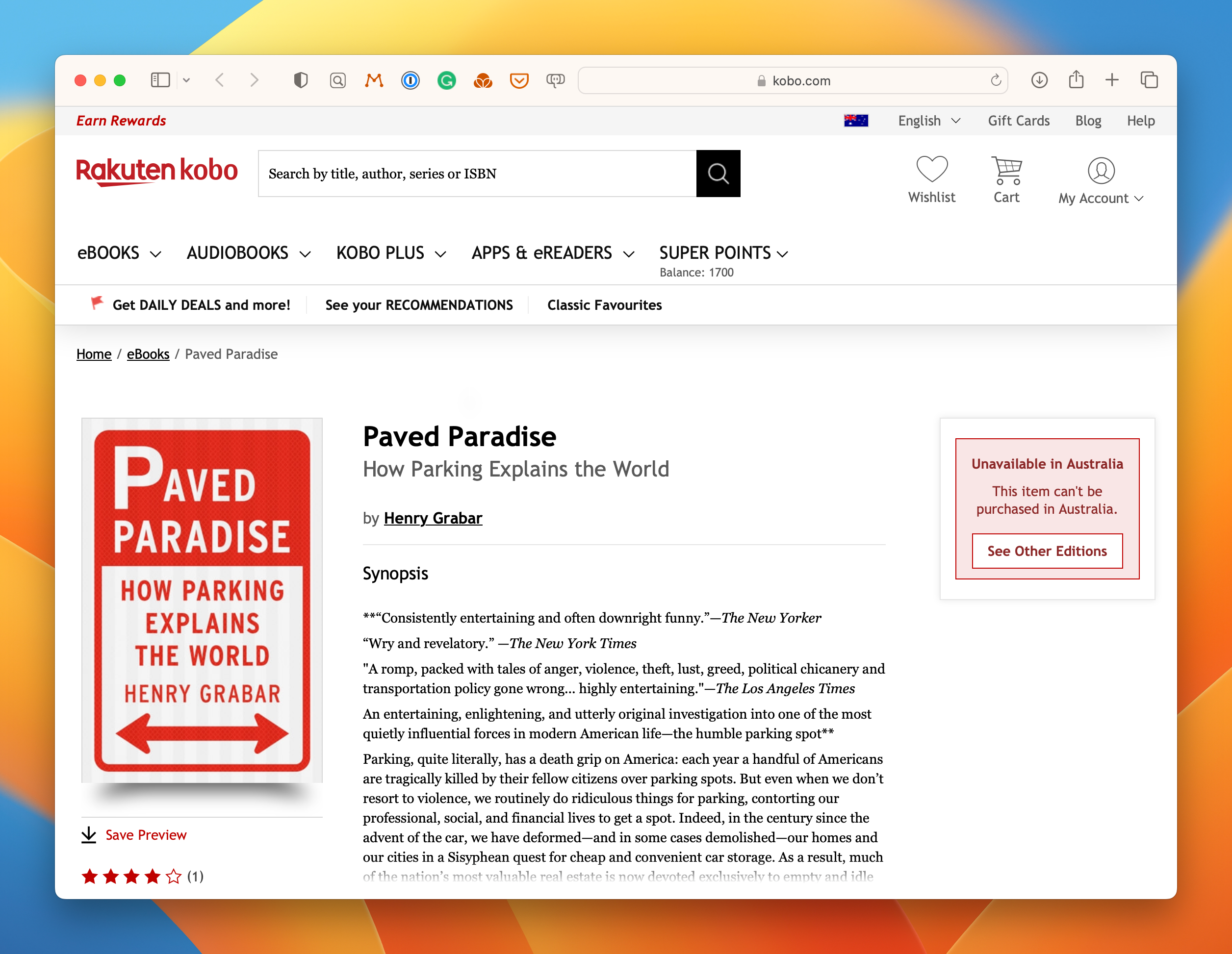
Apple Vision has been 'in development' for 28 years
Tim Cook once said that “we are high on AR for the long run” and it’s true, for 28 years Apple - and the rest of the tech industry - has been noodling around on augmented reality and virtual reality.
Out of a purely personal interest, I started flipping through rumours about Apple and its “glasses” to see where the leakers got it right and wrong, and the next minute I’m back in 1995, so I thought a curated list of all the leaks, rumours, and related dates might be a nice record to make in the year of our headset, AVP 0.
Enjoy this trip down memory lane:
1981 - Steve Mann designs a backpack-mounted computer to control photographic equipment
While still in high-school Steve Mann wired a 6502 computer (as used in the Apple-II) into a steel-frame backpack to control flash-bulbs, cameras, and other photographic systems.
23 May, 1995 - Apple Technical Report #125: Volumetric Hyper Reality, A Computer Graphics Holy Grail for the 21st Century?
Such a display would convincingly create the illusion of objects with arbitrary optical properties. A metallic object depicted using the display would reflect the visual surroundings of the display. Dielectric materials would show correct refraction and reflection effects. Light shone on the display would illuminate the virtual objects within it. When programmed to depict empty space, the display would, for all practical purposes, disappear, rendering the contained volume invisible. Incremental steps towards such a device are discussed.
September 16, 1997 - Steve Jobs returns to Apple
March, 1998 - Tim Cook joins Apple as senior vice president for worldwide operations
March 21, 2002 - Apple: Stereoscopic Displays?
Apple is said to have other flat-panel technologies cooking in the labs, including stereoscopic displays
Arnold Kim writes:
Stereoscopic displays would presumably simulate 3d/VR environments. A bit unique for the consumer market… but an interesting area of research for Apple.
May 16, 2003 - Simon Greenwold publishes his Spatial Computing masters thesis
June 29, 2007 - Apple releases the iPhone
April 17, 2008 - Apple Researching Laser-Based Head Mounted Display
A user simply plugs their handheld video player such as the iPod manufactured by Apple Computer of Cupertino, Calif., into the compact laser engine attached to their belt, and places the headset on their head. The user then selects a video to be played at the handheld video player (viewing through transparent display elements).

Apple’s patent was originally filed in May 2008 and is based on a provisional patent application filed in May 2007

December 17, 2009 - Apple Working on 3D ‘Hyper-Reality’ Displays
August 24, 2011 - Tim Cook becomes CEO
October 5, 2011 - Steve Jobs passes away
January 12, 2012 - Apple is paving the Way for a new 3D GUI for iOS Devices
The invention covers a 3D display environment for a mobile device that uses orientation data from one or more onboard sensors to automatically determine and display a perspective projection of the 3D display environment based on the orientation data without the user physically interacting with (e.g., touching) the display.
August 2012 - Palmer Luckey launches the Oculus campaign on Kickstarter
22 February, 2013 - Google aims to sell Glass to consumers this year for less than $1,500
26 February, 2013 - John Gruber on Google Glass:
And the idea that people will wear things like this everywhere (as opposed to special specific scenarios, such as workers in an environment where their hands are otherwise occupied, like, say, surgeons) strikes me as creepy as hell.
December 10, 2013 - Apple’s Work on Video Goggles Highlighted in Newly Granted Patent
A goggle system for providing a personal media viewing experience to a user is provided. The goggle system may include an outer cover, a mid-frame, optical components for generating the media display, and a lens on which the generated media displayed is provided to the user. The goggle system, or head-mounted display may have any suitable appearance. For example, the goggle system may resemble ski or motorcycle goggles. To enhance the user’s comfort, the goggle system may include breathable components, including for example breathable foam that rests against the user’s face, and may allow the user to move the display generation components for alignment with the user’s eyes. In some embodiments, the goggle system may include data processing circuitry operative to adjust left and right images generated by the optical components to display 3-D media, or account for a user’s eyesight limitations.
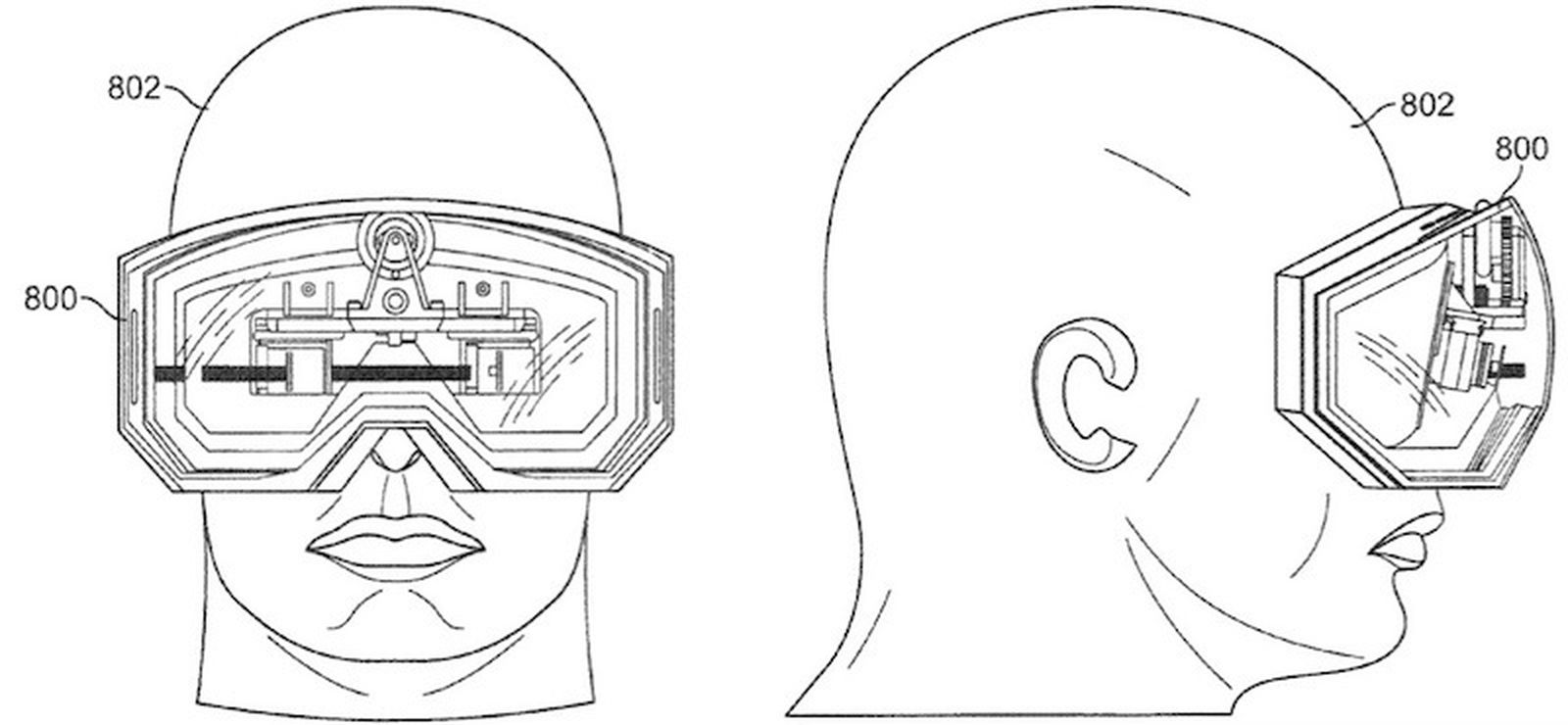
November 24, 2014 - Job Listing Points Towards Apple’s Continued Interest in Virtual Reality
19 March 2015 - Gene Munster Claims Apple Has Augmented Reality R&D Team
May, 2015 - Apple hired Mike Rockwell from Dolby Laboratories
The team, called the Technology Development Group, developed an AR demo in 2016 but faced opposition from then-chief design officer Jony Ive and his team.
May 28, 2015 - Apple Acquires Augmented Reality Company Metaio
January 26, 2016 - Apple CEO Tim Cook: Virtual Reality is ‘Really Cool’, Has ‘Interesting Applications’
It’s really cool
January 29, 2016 - Apple Has Secret Team Working on Virtual Reality Headset
Juli Clover reports:
Hundreds of employees are part of a “secret research unit” exploring AR and VR
February 19, 2016 - Avi Bar-Zeev on his blog: On Holographic Telepresence
I may get around to telling the rest of the story some other time. But I just wanted to say how proud I am of the team and the vision to show the world a glimpse of our collective future.
March 30, 2016 - Microsoft HoloLens released
June 2016 - Avi Bar-Zeev joins Apple
July 26, 2016 - Apple CEO Tim Cook on Augmented Reality: ‘We Continue to Invest a Lot in This’
We are high on AR for the long run
August 23, 2016 - Apple Patent Details Visual-Based AR Navigation Device - reporting on a 2013 patent
The patent notes that visual-based inertial navigation systems can achieve positional awareness down to the centimetre scale without the need for GPS or cellular network signals. However, the technology is unsuitable for implementation in typical mobile devices because of the processing demands involved in variable real-time location tracking.
To overcome the limitation, Apple’s invention uses something called a sliding window inverse filter (SWF) that minimizes computational load by using predictive coding to map the orientation of objects relative to the device.

October 14, 2016 - BuzzFeed News Japan: Tim Cook Talks About Apple’s Augmented Reality Ambitions
November 14, 2016 - Mark Gurman: Apple Said to Explore Smart Glasses in Deeper Wearables Push
January 9, 2017 - Robert Scoble on Facebook: “Apple and Zeiss working together on augmented reality optics”
January 17, 2017 - John Gruber spitballing Apple AR’s usefulness
January 31, 2017 - Apple patents detail augmented reality device with advanced object recognition, POI labelling
February 28, 2017 - Apple Exploring AR in Israel as Robert Scoble Insists ‘Mixed Reality’ Glasses Coming This Year
June 26, 2017 - The Verge reports “Apple’s AR is closer to reality than Google’s”
Apple has often been accused of acting like it invented things that others have been doing for years. That complaint is not without merit, however, Apple can lay claim to transforming existing things into mainstream successes, which takes no small amount of invention in its own right.
June 29, 2017 - John Gruber on Genre Munster’s Apple Glasses predictions
I’m hard-pressed to think of anything we do today on our phones that would be better using AR glasses. Anything.
August 4, 2017 - Apple Experimenting With Several Augmented Reality Glasses Prototypes
November 2, 2017 - Tim Cook on Augmented Reality: ‘What It Will Be, What It Can Be, I Think It’s Profound’
December 4, 2017 - Apple Supplier Quanta Computer Teams Up With Lumus to Make Lenses for Augmented Reality Smart Glasses
January 12, 2018 - Apple Reportedly Met With Potential Suppliers of Augmented Reality Glasses at CES 2018
During CES, representatives from major players like Apple, Facebook, and Google met with suppliers that make the nuts and bolts required to power AR glasses, according to people familiar with the meetings.
March 1, 2019 - Tim Cook to Investors: Apple is Working on Future Products That Will ‘Blow You Away’
February 4, 2019 - Variety: The Inventor of the HoloLens Just Left Apple
Bar-Zeev has been working in the AR/VR space for close to three decades. Back in the ’90s, he was part of a team at Disney that worked on some early VR experiences for the company’s theme parks, including “Aladdin’s Magic Carpet” VR ride.
He then went on to co-found Keyhole, the company that later got acquired by Google to become the foundation of Google Maps. After a brief stint at Linden Lab, Bar-Zeev worked for four years at Microsoft.
“He helped found and invent Hololens at Microsoft, assembling the very first AR prototypes, demos and UX concepts, sufficient to convince his leadership,” according to his LinkedIn bio.
Avi says:
“I left my full-time position at Apple in January. I had the best exit one can imagine. I have only nice things to say about Apple and won’t comment on any specific product plans.”
March 8, 2019 - Kuo: Apple’s AR Glasses to Launch in 2020 as iPhone Accessory
June 27, 2019 - Jony Ive leaves Apple.
August 29, 2018 - Apple Purchased Akonia Holographics, a Company That Makes Lenses for AR Glasses
November 11, 2019 - Apple Said to Release AR Headset With 3D Scanning in 2022, Followed by Sleeker Glasses in 2023 & New AR Sensor Coming to 2020 iPad Pro and iPhone Models, AR/VR Headset as Soon as 2021
Plus, The Information reports on the infamous “1000 person meeting”: Apple Eyes 2022 Release for AR Headset, 2023 for Glasses
Apple executives discussed the timelines, which haven’t been previously reported, in an internal presentation to employees at the company’s Cupertino, California, campus in October, according to people familiar with the matter. Apple Vice President Mike Rockwell, who heads the team responsible for Apple’s AR and virtual reality initiatives, led the meeting, which included new details about the design and features of the AR headset, these people said. The product timetables run counter to recent analyst and media reports that said an Apple AR device could arrive as early as next year.
March 24, 2020 - Apple’s AR Glasses Could Launch by 2022 as Suppliers Reportedly Ramp Up Development
May 19, 2020 - ‘Apple Glass’ Rumored to Start at $499, Support Prescription Lenses, and More
Apple originally planned to unveil the glasses as a “One More Thing” surprise at its iPhone event in the fall, but restrictions on in-person gatherings could push back the announcement to a March 2021 event
May 21, 2020 - Jon Prosser Claims Apple is Working on ‘Steve Jobs Heritage Edition’ AR Glasses, Gurman Calls Rumor ‘Complete Fiction’
They’re also working on a prototype, a Steve Jobs Heritage Edition, similar to how we had an Apple Watch Edition, like that ridiculous $10,000 gold one when it first came out. Some like tribute to Steve Jobs, obviously just like a pure marketing ploy at this point.
Extra: Twitter thread between Prosser and Gurman on the subject.
May 21, 2020 - Apple’s Augmented Reality Glasses Again Rumored for 2021 Launch
October 22, 2020 - Apple Glasses Will Reportedly Use Sony’s ‘Cutting-Edge’ OLED Micro-Displays to Deliver ‘Real AR Experience’
January 6, 2021 - Apple Glasses Reportedly Progressing Towards Engineering Verification Stage With Focus on Battery Life and Weight
January 21, 2021 - Bloomberg: Apple’s First AR/VR Headset ‘Pricey, Niche Precursor’ to More Ambitious AR Glasses and Could Launch Next Year
March 7, 2021 - Kuo: Apple to Launch Mixed Reality Headset in Mid 2022 and Augmented Reality Glasses by 2025
April 26, 2021 - Apple Glasses Prototype Reportedly Falls Behind 2021 Testing Schedule
October 28, 2021 - Facebook rebrands to Meta, as in “the metaverse”
Mark Zuckerberg:
The metaverse is the next frontier
January 17, 2023 - Development on Augmented Reality ‘Apple Glasses’ Postponed Indefinitely
March 12, 2023 - Apple CEO Tim Cook Ordered Headset Launch Despite Designers Wanting to Wait for AR Glasses
June 5, 2023 - Apple Vision Pro announced at WWDC 2023
A must-listen on the Apple Vision Pro is Cortex’s most recent episode where Myke Hurley recounts his demonstration experience with the product.
AI and I just published a children's book: The Mountain Princess
About three hours ago I was putting my daughter to bed and thought it would be cute to have ChatGPT write a fairytale about Luna and where we’re staying this week, Liechtenstein.
I thought it was a cute story and something others might enjoy.
Three hours later I’ve had Midjourney make illustrations, assembled the book - very roughly - in the ‘Kindle Kids Book Creator’, and it’s now submitted to the Amazon Kindle store.
You can see the ChatGPT prompts here and download the .mobi file here. When it’s live on the Kindle store I believe this link will get you there.
Three hours from a good idea to a low-fi book being published.


The fascinating story of Castle Itter and the last European WWII battle
Driving across Austria this week we’ve seen plenty of castles, we even stayed in one, and every sighting of one is pretty special.

There’s one near us which looks very much like a castle, and tonight on our last night in Hopfgarten I found out the history of the castle on Atlas Obscura and it’s the most interesting of stories:
In the final weeks of the European theater of World War II, an unexpected union of German and American forces guarded a select group of abandoned Nazi prisoners against the Waffen-SS. The conflict fought by this unique joint American-German alliance is frequently referred to as the strangest battle of World War II.
Castle Itter was first built in the ninth century by the Bavarians and spent many years as a private residence. In May of 1943, after the Anschluss of Austria, it was transformed into a prison. For two years, French captives considered to be of high value were confined within its walls.
But as Stephen Harding writes in The Last Battle, those prisoners eventually found themselves unguarded and thrust into a precarious position. Days after Hitler died by suicide, it became clear the war had reached a turning point. The commander and warden of the prisoners at Castle Itter abandoned their posts, knowing the end of the war was near. The remaining guards also fled, essentially giving the castle to those imprisoned within.
This left the prisoners vulnerable to the loyal Waffen-SS troops prowling the countryside in search of deserters and enemies of the regime. This is when the strange, unlikely union of German and American forces began. Kurt-Siegfried Schrader, a highly decorated SS Hauptsturmführer and Josef “Sep” Gangl, a Wehrmacht Major, joined Captain John “Jack” Carey Lee, Jr., an American Tank Company Commander, in protecting the prisoners and defending the castle.
Schrader and Gangl had become disillusioned with the Nazi ideology and both independently connected with the Austrian resistance. Upon hearing the prisoners at the castle were unguarded, Schrader went to the fortress to protect those held inside. Gangl, now serving as the head of the local resistance, was aware the forces under his command would not be strong enough to fight against the nearby Waffen-SS troops. He realized he needed the American forces to arrive, so he set off to find them in Kufstein.
Not long after arriving in Kufstein, Gangl met up with Lee and they began plotting. After a reconnaissance mission, Lee and his friend brought their Sherman Tanks to the defend the castle. But along the way, poor infrastructure caused one tank and its crew to be left behind.
Once at the castle, Wehrmacht soldiers and the few Americans prepared for battle. The prisoners were instructed to remain safely in the cellar, but many defied these orders and fought alongside the German and American troops. The stage was now set for the fight.
Between 100 and 150 Waffen-SS troops attacked the castle in the early morning hours of May 5. Though one Wehrmacht soldier abandoned his post during the fighting, the remaining American-German defenses held the prison until more American troops from the 142nd Infantry Regiment arrived 12 hours after the fighting had begun. With the help of the additional American troops, the guards defeated the Waffen-SS in what’s viewed the last battle fought in the European theater of World War II. Gangl sadly perished during the fight.
The genesis story of Apple computers
I’ve been thinking about this story from Steve Jobs, recalled in 1996 and told in the new book Make Something Wonderful, about how and why he and Steve Wozniak started Apple:
The reason we (Woz and I) built a computer was that we wanted one, and we couldn’t afford to buy one. They were thousands of dollars at that time. We were just two teenagers. We started trying to build them and scrounging parts around Silicon Valley where we could. After a few attempts, we managed to put together something that was the Apple I. All of our friends wanted them, too. They wanted to build them. It turned out that it took maybe fifty hours to build one of these things by hand. It was taking up all of our spare time because our friends were not that skilled at building them, so Woz and I were building them for them.
We thought if we could just get what’s called a printed circuit board, where you could just plug in the parts instead of having to hand-wire the whole thing, we could cut the assembly time down from maybe fifty hours to more like an hour. Woz sold his HP calculator, and I sold my VW Microbus, and we got enough money together to pay someone to design one of these printed circuit boards for us. Our goal was to just sell them as raw printed circuit boards to our friends and make enough money to recoup our calculator and transportation.
What happened was that one of the early computer stores, in fact, the first computer store in the world, which was in Mountain View at the time, said, “Well, I’ll take fifty of these computers, but I want them fully assembled.” Which was a twist that we’d never thought of.
We went and bought the parts to build one hundred computers. We built fifty of them and delivered them. We got paid in cash and ran back and paid the people that sold us parts. Then we had the classic Marxian profit realization crisis, which was our profit wasn’t liquid—it was in fifty computers sitting on the floor.
We decided we had to start learning about sales and distribution so that we could sell the fifty computers and get back our money. That’s how we got in the business. We took our idea (for the computer) to a few companies, one where Woz worked (Hewlett-Packard) and one where I worked at the time (Atari). Neither one was interested in pursuing it, so we started our own company.
I’m interviewing newly appointed marriage celebrants for a podcast project at the moment and some don’t have a fire in their belly as to why they started. Their genesis story is missing some heart and soul. I think about them and whether they have staying power like the two Steves who just built computers because they wanted one. That early fire is valuable.

Netflix, One Tel, and me, a nostalgic love triangle
Britt and I are watching Netflix’s new show The Mole at the moment and as that guy who knows Queensland like the back of his hand I’ve been following the filming locations keenly. (If you know what that Daintree resort is, please tell me!)
So as the team reached “The Great Barrier Reef” aka The Whitsundays I immediately recognised the location as Woodward Bay, just a few minutes’ drive north of Airlie Beach. Visitors in the past include the King of Morocco, Tom Cruise and Nicole Kidman, but most importantly for this story, the owner’s husband, Jodie Rich. Apparently, they all helicoptered in, but I just drove when I visited.
I’ve been brought in - pretty sure it’s 1999 or 2000 - to install two Alcatel PABX telephone systems, one that sits at the front gate, and another in the main compound, connected by fibre optic, to allow the main compound to make and receive phone calls, but also for the fancy new gate to be opened by phone call.
I worked for a local company called Business Solutions, and my experience there has always stuck with me. We were a one-stop shop where we provided actual business solutions, not just products. I still love doing that in businesses today.
Anyhow, I’m on this amazing property that Tom Cruise has just stayed at, and Japanese property developer, Kumagai Gumi, has just dropped $150 million on the property, then sold it to Jodee Rich’s wife for $2.5 million so that’s probably a totally cool and normal transaction.
The whole thing was out of reach of ASIC as One Tel went broke because the husband didn’t own the property that was attributed to him, but his wife did. That’s the kind of business sense that gets you places, like starting your own top-level domain (.CEO) and NFT.NYC, kill me now, this bloke has such an epic legacy of grifting.
Seeing the property in The Mole was cool, it looked so similar twenty years on. It is honestly a really beautiful property. Back then they allegedly had lasers across the bay to keep people out, and as a young bloke, it’s the nicest property I’ve ever stepped foot on. I remember being told that the coffee table was made from a door of a monastery.
Interested in staying the night? It’s only five figures a night.
And if you need a PABX installed in a weird situation twenty years ago, give me a call.

My mate Jay has made a documentary about remote knowledge workers, digital nomads, working around the Arctic Circle and I’m pretty damn jealous of those landscapes, the visuals, and the lifestyle! Check out the trailer!
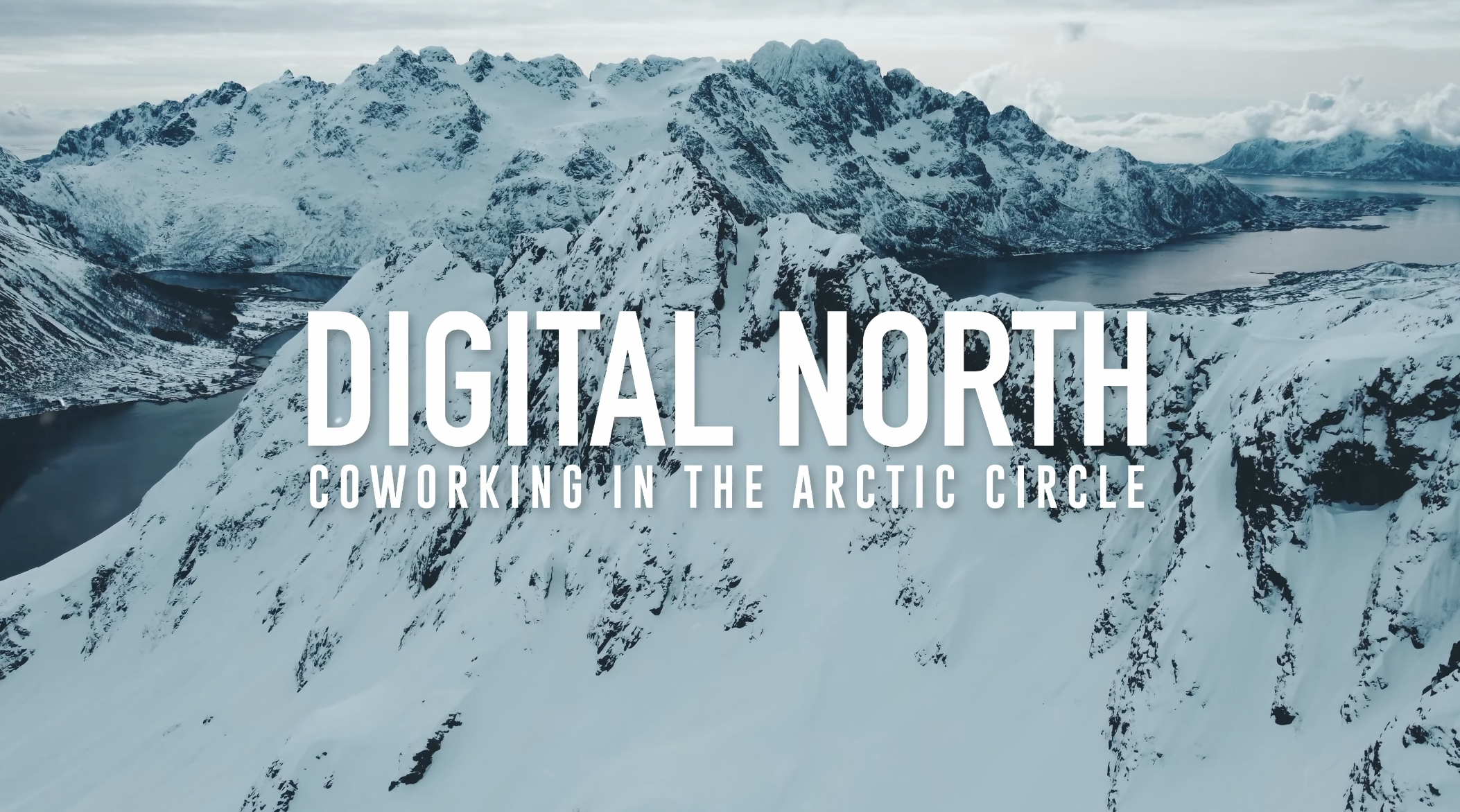
Salon Tom Weston’s Five Rules of Being A Grown-Up:
Write one blog post every day that scares you
If you’re uncultured swine like me, you probably thought that Baz Lurhmann gave this commencement speech and it was released as a song.
The truth is far more boring and interesting at the same time.
Advice, like youth, probably just wasted on the young
Wear sunscreen.
If I could offer you only one tip for the future, sunscreen would be it. The long-term benefits of sunscreen have been proved by scientists, whereas the rest of my advice has no basis more reliable than my own meandering experience. I will dispense this advice now.
Enjoy the power and beauty of your youth. Oh, never mind. You will not understand the power and beauty of your youth until they’ve faded. But trust me, in 20 years, you’ll look back at photos of yourself and recall in a way you can’t grasp now how much possibility lay before you and how fabulous you really looked. You are not as fat as you imagine.
Don’t worry about the future. Or worry, but know that worrying is as effective as trying to solve an algebra equation by chewing bubble gum. The real troubles in your life are apt to be things that never crossed your worried mind, the kind that blindside you at 4 p.m. on some idle Tuesday.
Do one thing every day that scares you.
Sing.
Don’t be reckless with other people’s hearts. Don’t put up with people who are reckless with yours.
Floss.
Don’t waste your time on jealousy. Sometimes you’re ahead, sometimes you’re behind. The race is long and, in the end, it’s only with yourself.
Remember compliments you receive. Forget the insults. If you succeed in doing this, tell me how.
Keep your old love letters. Throw away your old bank statements.
Stretch.
Don’t feel guilty if you don’t know what you want to do with your life. The most interesting people I know didn’t know at 22 what they wanted to do with their lives. Some of the most interesting 40-year-olds I know still don’t.
Get plenty of calcium. Be kind to your knees. You’ll miss them when they’re gone.
Maybe you’ll marry, maybe you won’t. Maybe you’ll have children, maybe you won’t. Maybe you’ll divorce at 40, maybe you’ll dance the funky chicken on your 75th wedding anniversary. Whatever you do, don’t congratulate yourself too much, or berate yourself either. Your choices are half chance. So are everybody else’s.
Enjoy your body. Use it every way you can. Don’t be afraid of it or of what other people think of it. It’s the greatest instrument you’ll ever own.
Dance, even if you have nowhere to do it but your living room.
Read the directions, even if you don’t follow them.
Do not read beauty magazines. They will only make you feel ugly.
Get to know your parents. You never know when they’ll be gone for good. Be nice to your siblings. They’re your best link to your past and the people most likely to stick with you in the future.
Understand that friends come and go, but with a precious few you should hold on. Work hard to bridge the gaps in geography and lifestyle, because the older you get, the more you need the people who knew you when you were young.
Live in New York City once, but leave before it makes you hard. Live in Northern California once, but leave before it makes you soft. Travel.
Accept certain inalienable truths: Prices will rise. Politicians will philander. You, too, will get old. And when you do, you’ll fantasize that when you were young, prices were reasonable, politicians were noble and children respected their elders.
Respect your elders.
Don’t expect anyone else to support you. Maybe you have a trust fund. Maybe you’ll have a wealthy spouse. But you never know when either one might run out.
Don’t mess too much with your hair or by the time you’re 40 it will look 85.
Be careful whose advice you buy, but be patient with those who supply it. Advice is a form of nostalgia. Dispensing it is a way of fishing the past from the disposal, wiping it off, painting over the ugly parts and recycling it for more than it’s worth.
But trust me on the sunscreen.
"He will take your daughters to be perfumers and cooks and bakers"
We, we the people, reframe and view government as a god. Which is quite unhealthy. We position our prime ministers and presidents as idols, put them on a pedestal, and expect a lot from them.
Ultimately, those positions - from the top to the bottom of the organisation chart - are not gods, they are servants. They serve our community. We render a select number of social services to this service provider and ask them to look after them. We’re talking roads, border control, hospitals, those dinky little health brochures, and everything in between.
We essentially outsource all these things to the state, federal, and local governments. This is great because I don’t want to be responsible for maintaining roads, bringing justice to situations, or manning the borders.
In doing this we are making the same choice the Israelites made when they asked Samuel for a king. So we get a king and we “render unto Caesar the things that are Caesar’s, and unto God the things that are God’s”.
Not everything is the government’s job. They are not a god, or God and some things shouldn’t be outsourced to the government.
Abortion, for example, I see abortion as a symptom of an unwell society. If abortion is occurring and it is unsafe then there should be safety regulations around it, but ultimately these laws or regulations are just bumper bars on the ten pin bowling alleyway.
When you are unwell, you don’t treat the symptoms, you treat the cause.
What is the cause of abortion? Who are these people wanting/having abortions? Do they really actually want an abortion, or would they have a child if the circumstances were different, either residentially, financially, or relationally? Maybe if they weren’t abused or tricked, they would want to become a parent?
Maybe there are people who genuinely want an abortion. Perhaps the baby is the unplanned result of a sexual encounter, what life are they leading where they want this? Surely there is something below the surface? A pattern of abuse, sexual or otherwise, that lead them to this place? Surely if families weren’t broken, and if we were vulnerable with each other, if we had tighter communities, we wouldn’t be reaching this endpoint?
I’m a middle-aged white guy, so I’m sure I’ve missed a case for abortion, but I struggle to believe that anything more than a few people are genuinely out there “murdering babies” with murderous intent. I imagine that most, almost all, would be regretful and mournful but seemingly without choice and between a rock and a hard place.
Legislation, machine-learning, artificial intelligence, and even Ceasar (the government), don’t know how to deal with complex issues like abortion, because they are human issues, with complex routing, complex incentives, responsibilities, and longterm effects.
But in his grace and glory, Christ does, and his ambassadors can. Let us render unto God what is God’s.
This position will anger pro-abortion and anti-abortion people because it actually requires you to care, listen, and lean in. It might even require some of your money or your resources. People aren’t ready to take personal responsibility for it.
But as Samuel warned the Israelites:
“These will be the ways of the king who will reign over you: he will take your sons and appoint them to his chariots and to be his horsemen to run before his chariots; and he will appoint for himself commanders of thousands and commanders of fifties, and some to plow his ground and to reap his harvest, and make his implements of war and the equipment of his chariots. He will take your daughters to be perfumers and cooks and bakers. He will take the best of your fields and vineyards and olive orchards and give them to his courtiers.
Kings can be real bitches.
“Listen to the voice of the people in all that they say to you; for they have not rejected you, but they have rejected me from being king over them”
If I can end on a real note, I really struggle when Christians get so excited about governments, electing the right governments, having the right kings, and I’m like, you read 1 Samuel mate?
New data on how Americans drank themselves to death during the pandemic, by Christopher Ingraham
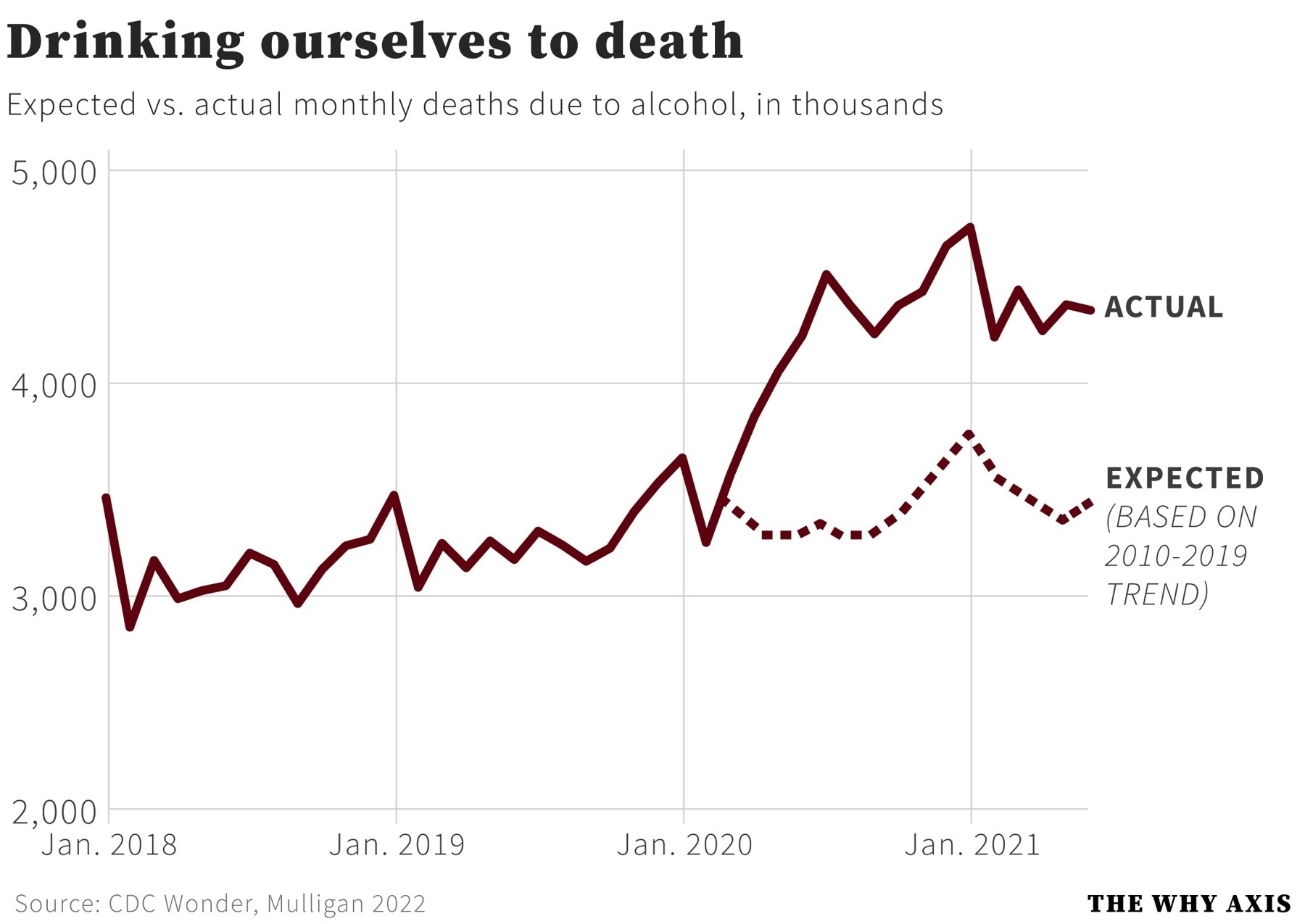
The Final Comeback of Axl Rose, by John Jeremiah Sullivan in 2006, referenced in the Rubesletter by Matt Ruby, today:
Axl has said, “I sing in five or six different voices that are all part of me. It’s not contrived.” I agree. One of them is an unexpectedly competent baritone. The most important of the voices, though, is Devil Woman. Devil Woman comes from a deeper part of Axl than do any of the other voices. Often she will not enter until nearer the end of a song. In fact, the dramatic conflict between Devil Woman and her sweet, melodic yang—the Axl who sings such lines as Her hair reminds me of a warm, safe place and If you want to love me, then darling, don’t refrain and Sometimes I get so tense—is precisely what resulted in Guns N’ Roses’ greatest songs…
And what does she say, this Devil Woman? What does she always say, for that matter? Have you ever thought about it? I hadn’t. “Sweet Child,” “Paradise City,” “November Rain,” “Patience,” they all come down to codas—Axl was a poet of the dark, unresolved coda—and to what do these codas themselves come down? Everybody needs somebody. Don’t you think that you need someone? I need you. Oh, I need you. Where do we go? Where do we go now? Where do we go? I wanna go. Oh, won’t you please take me home?
In 2022 I want to be a lot more deliberate about my inputs. Garbage in, garbage out. I’m continuing to craft my newsletters and subscriptions, detailed on my inputs page. Plus I’m now documenting books I want to read, books I am reading, and books I have read.
Small atomic changes should put make sure I’m walking down the right track.
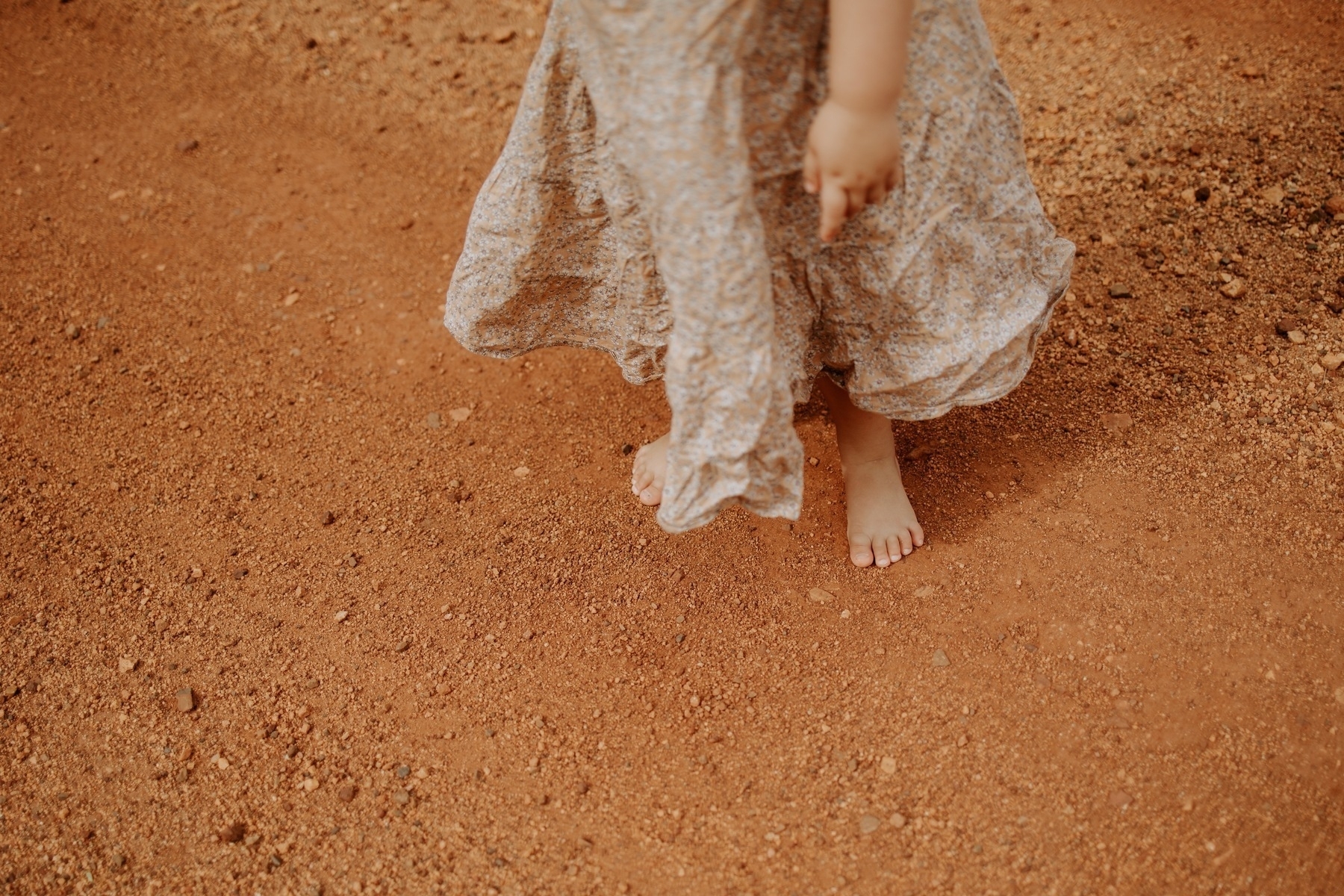
Dear Me,
If, in future years, anyone asks you to give advice to your sixteen year old self… don’t.
Make your own unique messes, and then work your own way out of them.
See you,
Alan Rickman
I missed this New York Times piece on my hometown, Mackay in North Queensland, about how the mayor is almost single-handedly trying to turn the community around on climate change.
“Over the past year, Mr. Williamson, a fifth-generation Mackay local, has tried more outreach and education, meeting frequently with residents to discuss why the trees are needed, and whether a lighter mix of vegetation might be allowed for partial ocean views.”
If Mackay was going to be in the New York Times I always thought it would be because they ship about 100 million tonnes of coal out of the region every year.

Om Malik on the lethal and constant feeling of self-importance we walk around with:
“With all the conversation of breaking free from big social platforms, owning your own digital identity, and being independent, I have been asking myself: how can all of us who have slowly become online performance artists ever be post-social?”
Since March 2020 I’ve thought a lot about what it means for us to think we’re so self-important and what that means for us living in a community with a virus like the spicy cough.
I’m sure it’s not only me, but the moment a sense of self-importance enters my soul I start feeling sick. This photo of a chicken with a mullet often helps me get over myself.

“I used to think the top global environmental problems were biodiversity loss, ecosystem collapse and climate change. I thought with 30 years of good science we could address those problems, but I was wrong. The top environmental problems are selfishness, greed and apathy – and to deal with these we need a spiritual and cultural transformation and we scientists don’t know how to do that.”
– Gus Speth

